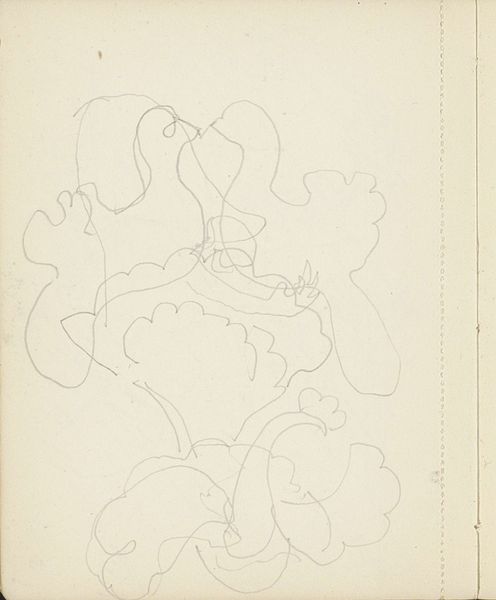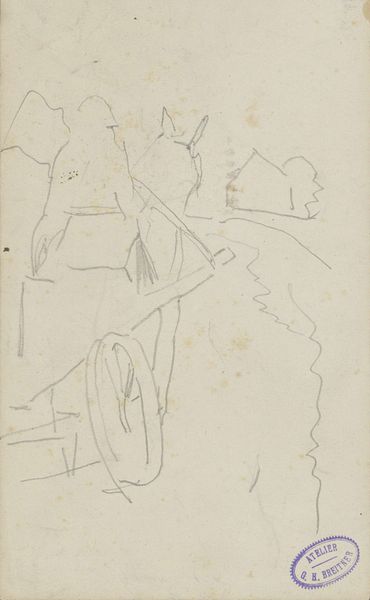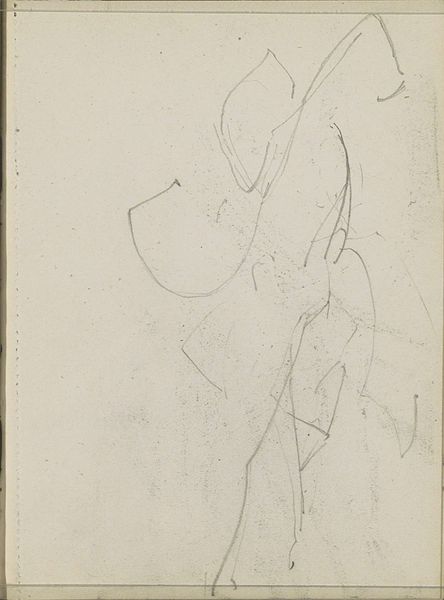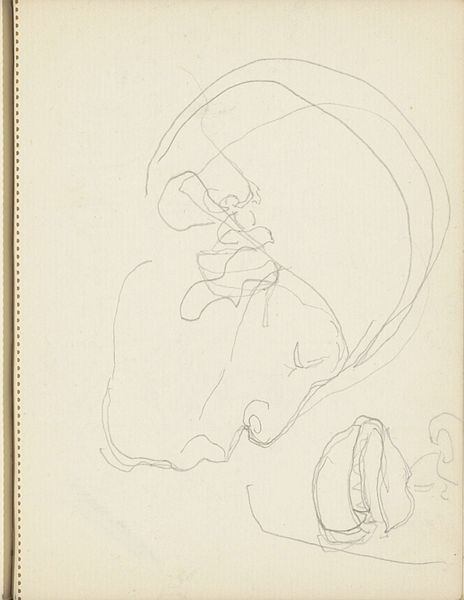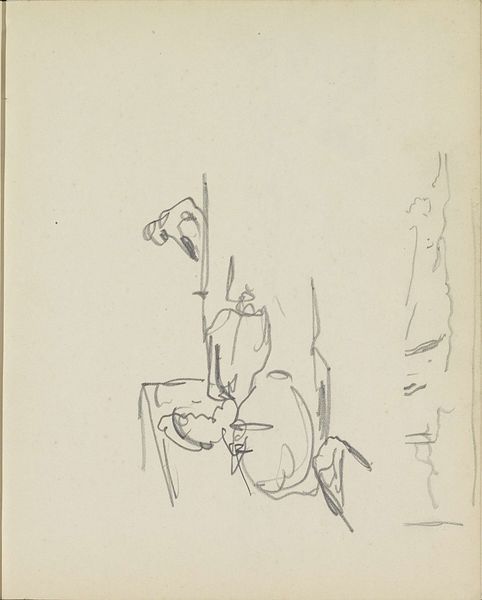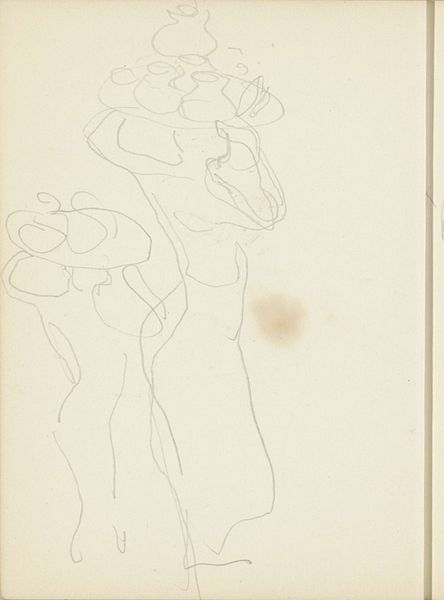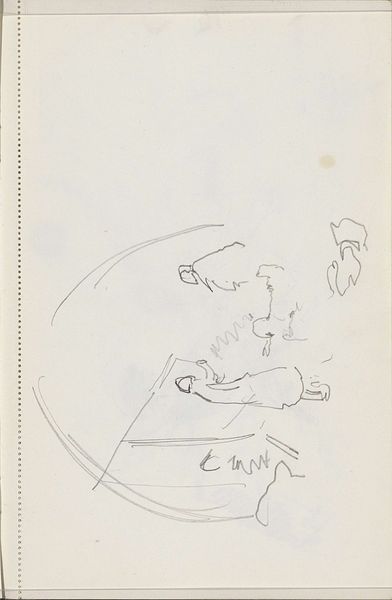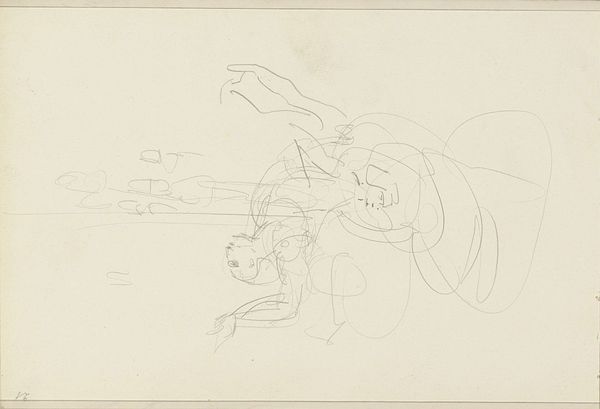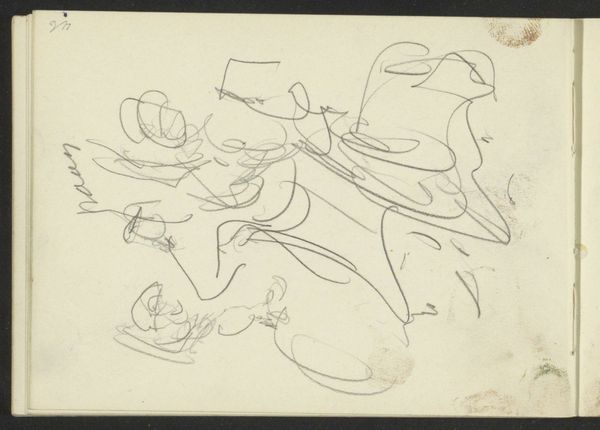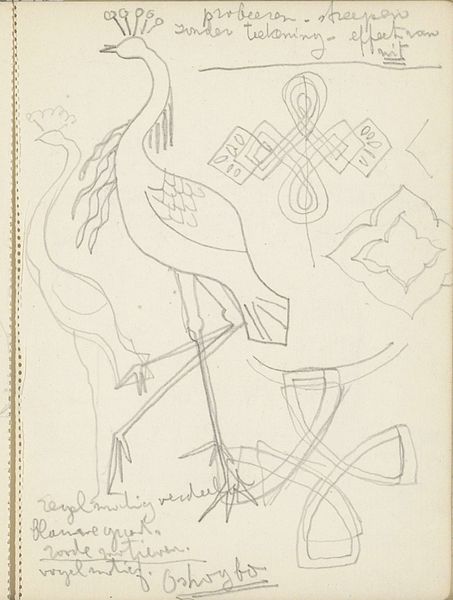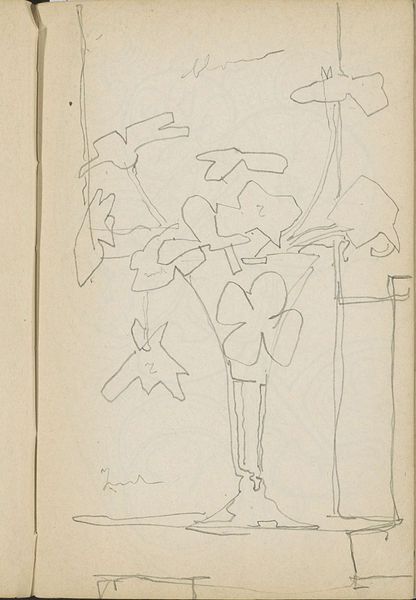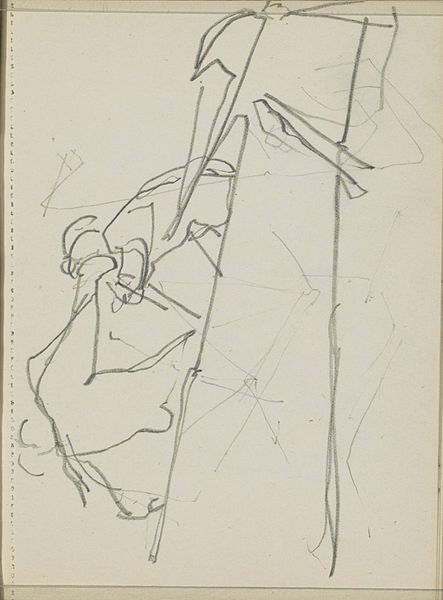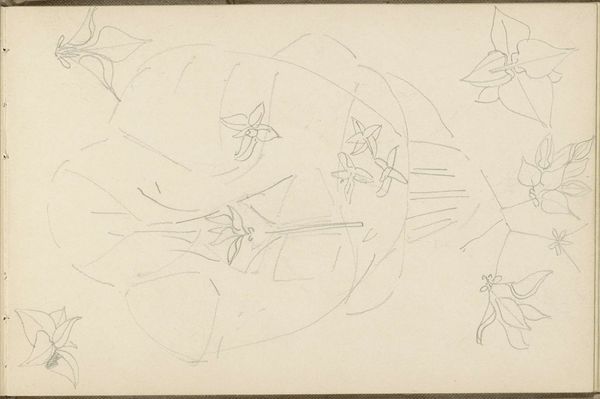
drawing, graphite
#
drawing
#
organic
#
flower
#
abstraction
#
line
#
graphite
Copyright: Rijks Museum: Open Domain
Curator: So, here we have a graphite drawing titled "Bloem," meaning flower in Dutch, attributed to Reijer Stolk and created sometime between 1916 and 1945. It currently resides here at the Rijksmuseum. Editor: Wow, my immediate sense is of vulnerability. Those faint graphite lines barely clinging to the paper. It’s like a fleeting thought, a whispered secret about the nature of beauty itself. Curator: That’s a beautiful observation. The minimalist line work immediately suggests a few important threads when thinking about the period in which Stolk was active. Post-impressionism was seeing many artists focusing on inner psychological experiences as the subject matter of their work, stripping the natural world down to its essential expression. This approach encouraged viewers to find their own meanings in the sparseness. Editor: Yes! It reminds me of sketching, that feeling of searching for the essence of a thing, trying to capture its spirit rather than its precise form. Like a love letter to a flower without actually portraying every petal. I see also abstraction nudging into representation, which has so much to do with a breakdown of what flowers are allowed to be! Curator: Indeed. This piece disrupts traditional artistic constraints by resisting idealized representations of nature and specifically florals, challenging notions of what subjects are aesthetically and culturally deemed as worth rendering at all. It really speaks to broader debates on gender, domesticity, and even labor prevalent during the first half of the twentieth century. Flowers often existed as objects relegated to the realm of "feminine" crafts rather than serious artistic subjects. Editor: It’s so freeing, right? You look at those wandering lines and sense a joyful escape from botanical correctness. There's also this lovely incompleteness, hinting at infinite potential, inviting anyone to reach in and become a co-creator by mentally furnishing missing parts. It feels alive, growing, and defying expectation. Curator: Absolutely, and viewing it in that light reframes those omissions as deliberate acts of defiance, contributing to larger sociopolitical dialogue around agency and aesthetic liberation. This resonates beyond art history and really links into present-day discussions of inclusivity, representation, and the enduring power of redefining cultural norms. Editor: Beautifully put. It makes you think about not just seeing the flower but feeling its underlying rebellion and vulnerability all at once, expressed through the sheer simple freedom of the artist’s hand. Curator: Agreed. Stolk’s piece, rendered through a relatively quiet arrangement, possesses the capability to challenge existing norms and, by extension, inspire continued pursuit of meaningful expression.
Comments
No comments
Be the first to comment and join the conversation on the ultimate creative platform.
